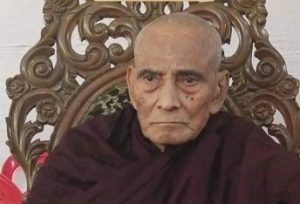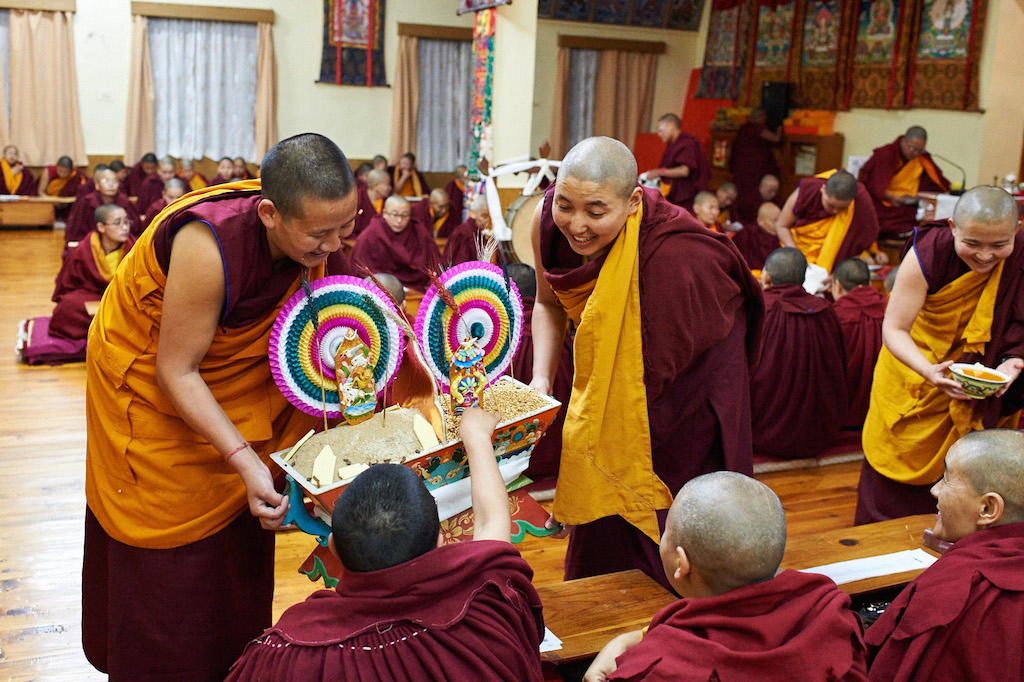
On 19 February, my partner Olivier Adam and I took part in the ceremonies for the Tibetan New Year, or Losar, at Geden Choeling Nunnery in McLeod Ganj, Dharamsala in northern India.
It was in the very early morning, at 3.30 a.m., that the 135 nuns of the nunnery were already sitting in the temple, beginning their Losar ceremony. We shared cups of traditional Tibetan salty butter tea with them. Then two nuns brought tsampa (roasted barley flour) around to everyone so that we could celebrate the start of the new year by throwing it into the air as an offering and wishing everyone “Losar Tashi Delek” (Happy New Year).
Inside the temple, the sound of the prayers grew to fill the entire space and the nuns’ voices were accompanied by bells and hand drums (damaru). Each of us was served sweet rice with dry fruit, followed by a delicious tsampa soup with various kinds of nuts and dates. Just as sweet tea was brought to the temple, we were all given khapsey, the deep-fried pastries served at Losar. They come in all sizes, but the ones we were given looked like two big open ears!
Then the sound of cymbals and drums joined with the nuns’ prayers to form strong, inspiring music. For more than an hour, the nuns’ chants resonated in all directions. Their voices melded in perfect, subtle harmony with the bells, cymbals, and drums.
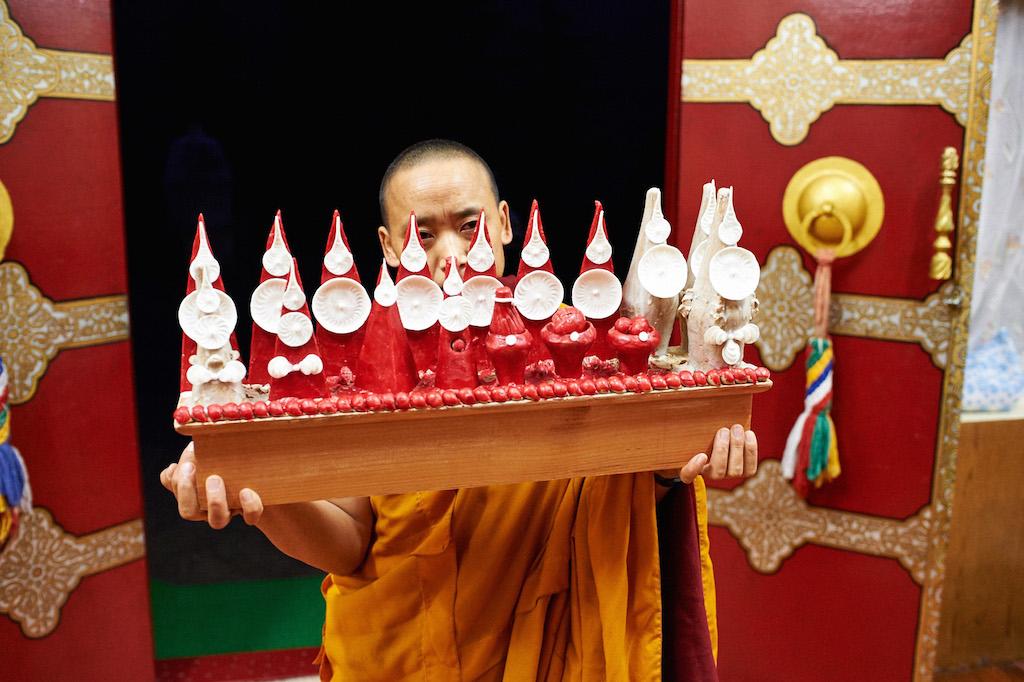
From outside, we suddenly heard the roll of thunder in the sky as if it were playing in the mountains. At the same time, tormas—figures made of flour and butter used in tantric rituals—were offered and blessed for the tsetor ceremony (where tormas are offered to the Buddhas).
A very slow and deep chanting prayer rose and filled the temple, its beauty stirring deep emotions in our hearts. The bells sounded, punctuating the prayers, and then the chanting began again in a smooth wave until all the instruments suddenly played together. Then came another wave of chants that concluded this marvellous offering to the New Year! We were totally moved by what was happening around us.
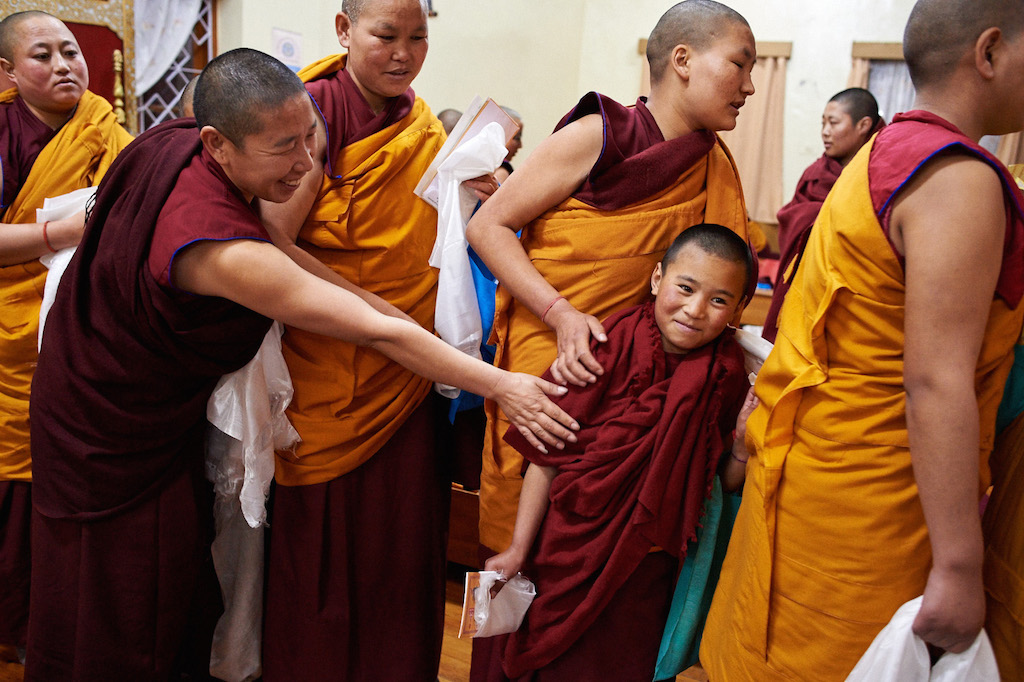
When it was time for tsok (feast offerings), three nuns blessed the offerings in front of the shrine and then it was distributed to everyone. In a big wave of joy and generosity, all the nuns received biscuits, fruits, chocolates, chips, and juices. It seemed like these blessed gifts were summoning the light itself to appear in this early morning, giving the new day a chance to be born.
At the end of this long ceremony, all the nuns lined up to pay homage at the throne of His Holiness the Dalai Lama, and also to the abbot of the nunnery, to the chant master (umse), the discipline master, and all the statues of the deities in the temple. With deep respect the nuns offered each of them white kataks (ceremonial scarves) and greeting cards.
During this time, the youngest nuns, who had only been at the nunnery for few months, were instructed by some older ones on how to pay their respects at the Geden Choeling Nunnery. The celebration at the nunnery was announcing a very auspicious Wood Sheep New Year!
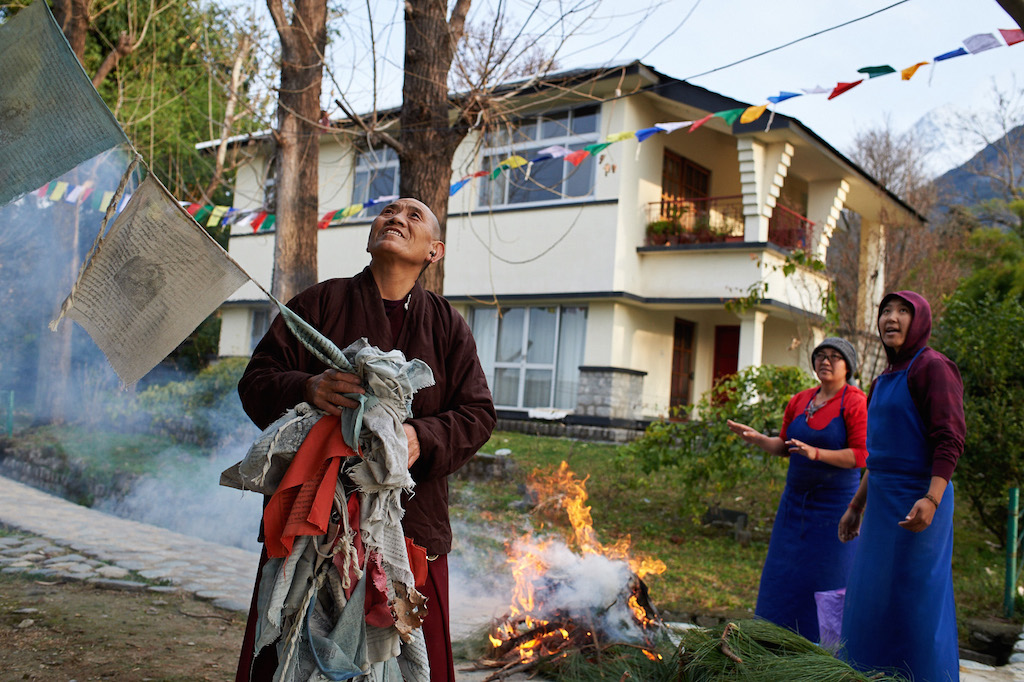
Two days later, on the third day of Losar, we travelled to Dolma Ling Nunnery in the valley below Dharamsala. There we were very lucky to attend a special incense offering ceremony called sang-sol (literally “incense burning”) in Tibetan. Many of the 240 nuns who live at the nunnery were away on holidays for Losar, but around 80 nuns were still there.
While most of the nuns were saying morning prayers inside the temple, a small group of nuns was outside, taking down the old prayer flags from the previous year and burning them with branches of fragrant pine and juniper. They were also hanging new windhorse (lungta) prayer flags with joyful energy.

When the ceremony was finished all the nuns came out of the temple. After days of rain, the sun appeared, like a miraculous rebirth! A smooth, perfect ray of light reflected off the snowy mountains just above us and lit the green grass of Dolma Ling.
In order to celebrate Losar once more, the nuns made a big circle. Each nun took some tsampa in her right hand as a precious gift. Then, twice, they raised their hands simultaneously, and on the third time the nuns threw the tsampa high into the air shouting “Losar Tashi Delek” and laughing again and again like children. The tsampa was flying through the air and onto their heads and their red robes, blessing this special day.
Afterwards, the nuns spent a long time outdoors enjoying the morning sun, joking together, taking pictures, and breathing in the fragrant juniper smoke from the incense offering. They very much enjoyed the beginning to this New Year, and they were so delighted to have shared it with us.
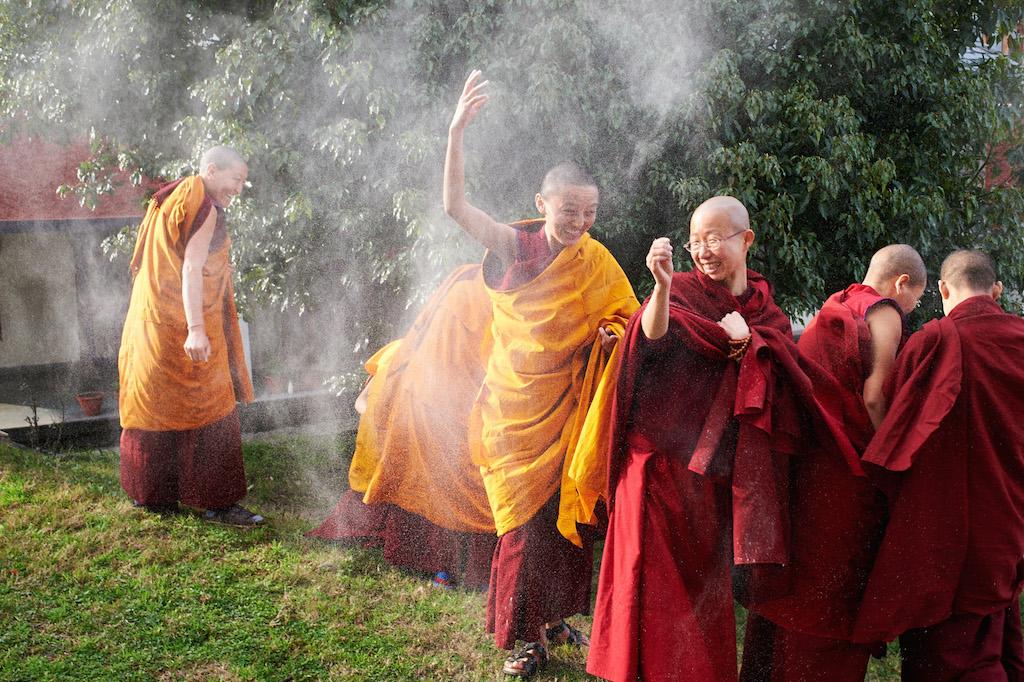
Geden Choeling and the Dolma Ling nuns are sponsored by the Tibetan Nuns Project. TNP was established more than 20 years ago under the auspices of the Tibetan Women’s Association and the Department of Religion and Culture of His Holiness the Dalai Lama and is dedicated to educating and supporting refugee nuns in India from all Tibetan Buddhist lineages. The goals of the Tibetan Nuns Project are to improve the standard of living and education of the nuns, to develop their capacities, and to establish projects that will generate revenue. Additionally, it aims to help nuns to gain more recognition within Buddhism itself.
Olivier Adam is a member of Dharma Eye–The Buddhist Photographer collective. To learn more about Dharma Eye and Olivier’s work as a photographer, visit Dharma Eye.
For more information, see:










